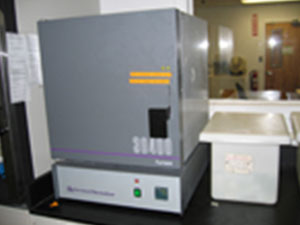Instruments
Instruments
MRRI analytical laboratory researchers are taking advantage of new, modern analytical instruments including GC-MS, GC-ECD/FID, AA, ICP-MS, Total Mercury Analyzer, and Ion Chromatography. The main function of laboratory is to support MRRI’s ongoing and MRRI-sponsored projects.
Mass Selective Detector (Agilent 5975 MSD with 6890GC)
Agilent 6890N gas chromatography and 5975 inert mass spectrometer is used in MRRI laboratory to analyze and identify volatile and semi volatile organic compounds such as pesticides, polychlorinated biphenyls (PCBs), polycyclic aromatic hydrocarbons (PAHs), and volatile organic compounds (VOCs). The 5975 Inert MSD, the popular bench top mass spectrometer, provides selectively and library-searchable capability to confirm unknown compounds from other detectors including flame ionization detector (FID) and electron capture detector (ECD).
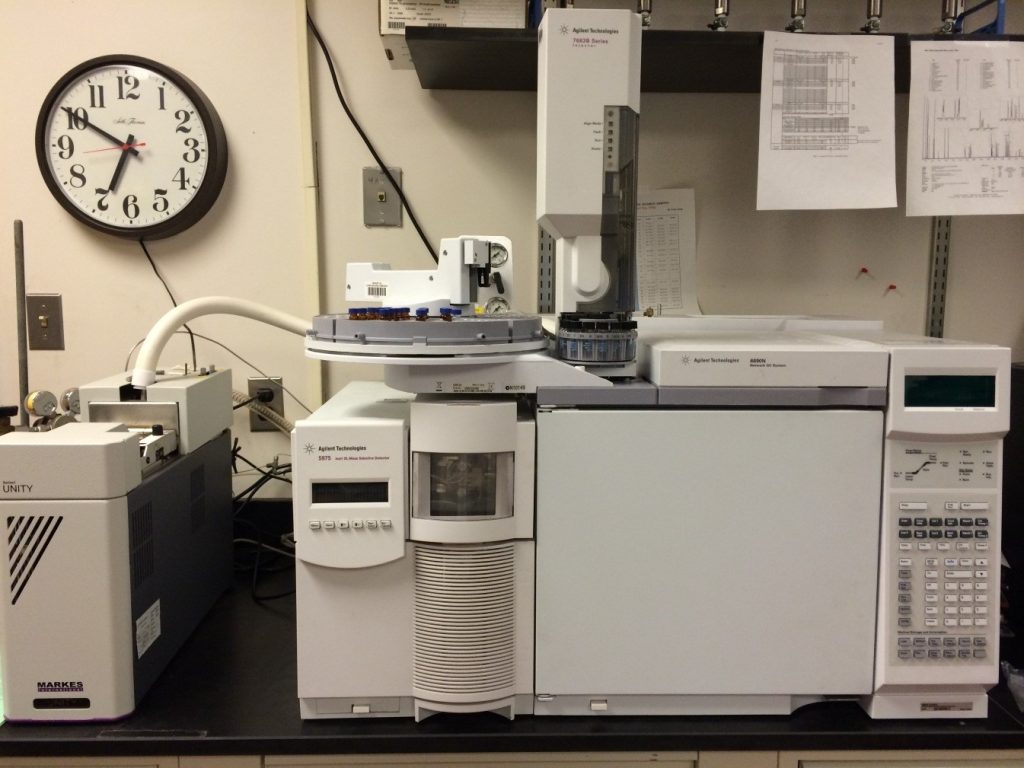
Gas Chromatography (Agilent 6890 GC)
Agilent 6890 GC is equipped two types of detectors, flame ionization detector (FID) and electron capture detector (ECD) including packed column and split/splitless inlet system. GC-ECD with DB-5 fused Silica Capillary column (J&W 122-5602, 5%-Phenyl Methylpoly Siloxane, 250µm x 60 m x 0.25µm) is used to analyze 109 PCBs and 18 pesticides in MRRI laboratory.
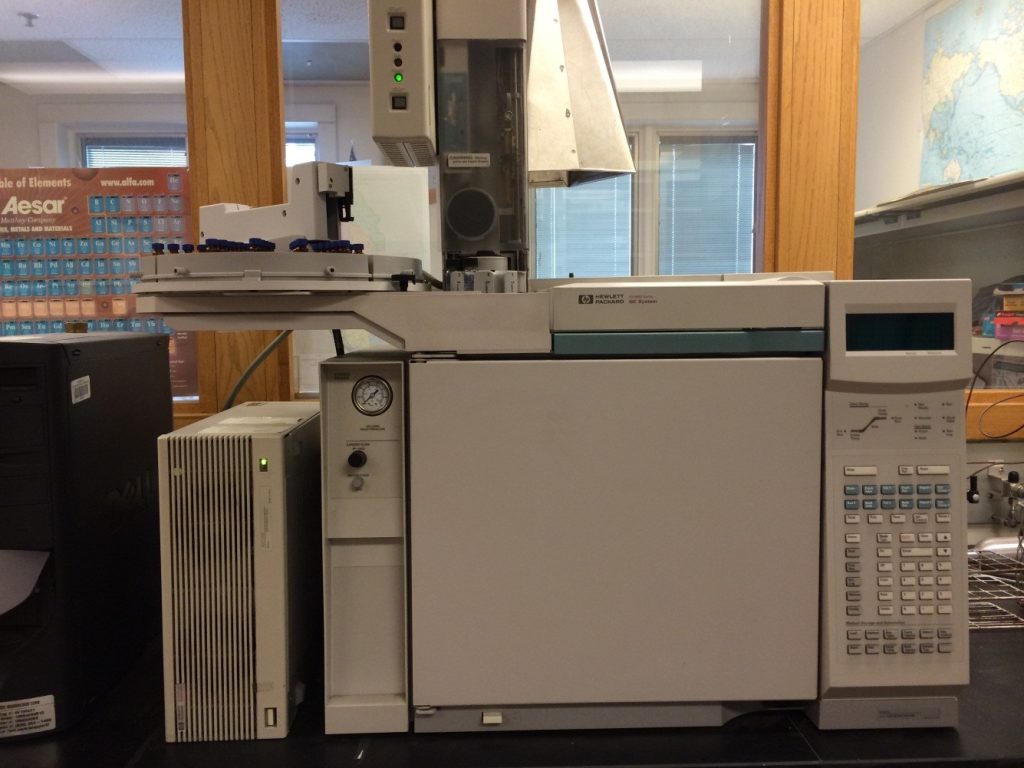
Ion Chromatography (Metrohm 881 Compact IC Pro)
Metrohm 881 Compact IC Pro Ion chromatography is used to analyze seven major anions (i.e. fluoride, chloride, bromide, nitrate, nitrite, phosphate and sulfate) and five major cations (i.e. sodium, ammonium, potassium, calcium, and magnesium) in water samples in the parts-per-billion (ppb) range. Concentrations of organic acids can also be measured through ion chromatography.
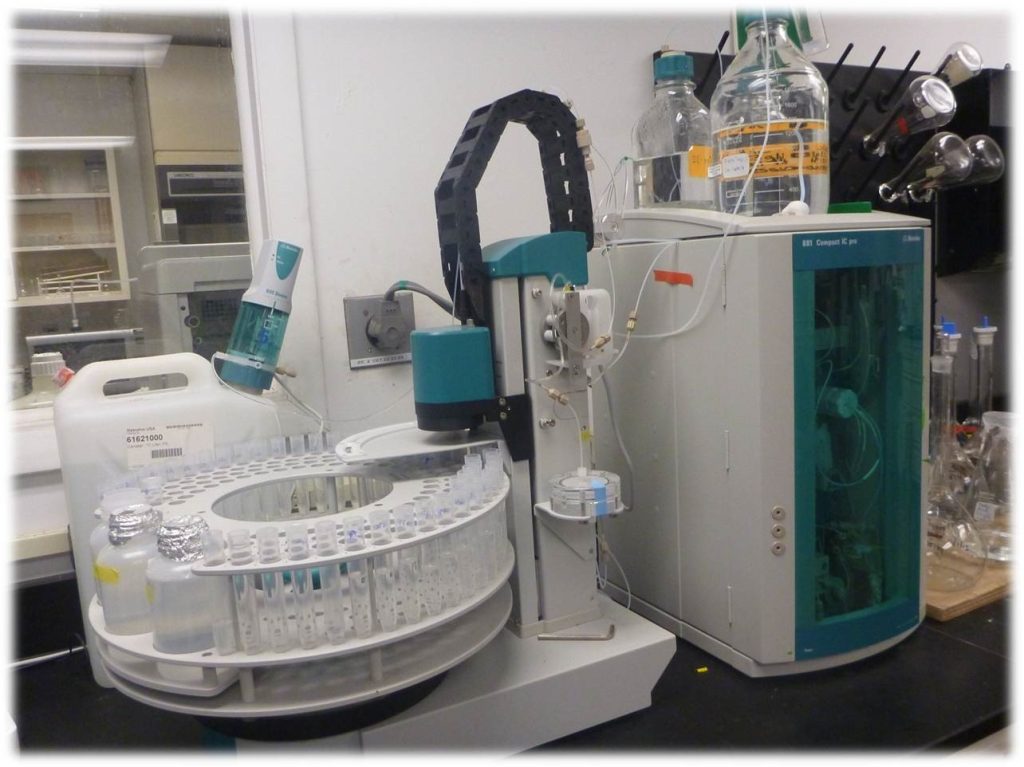
LOW-LEVEL TOTAL MERCURY ANALYZER (BROOKS RAND LABORATORY)
The standard Brooks Rand 1631 total mercury analyzer, MERX-T, consists of the Model III Atomic Fluorescence detector, purge & trap unit and autosampler. This automated system allows for the simultaneous purging of multiple samples while previously loaded amalgamation traps are analyzed for the analysis of total mercury analysis of oxidized water samples (EPA Method 1631), digested/oxidized solid samples (Appendix to EPA Method 1631), and air samples. The current calibration range of mercury in MRRI laboratory is from 5 picogram to 10,000 picogram.
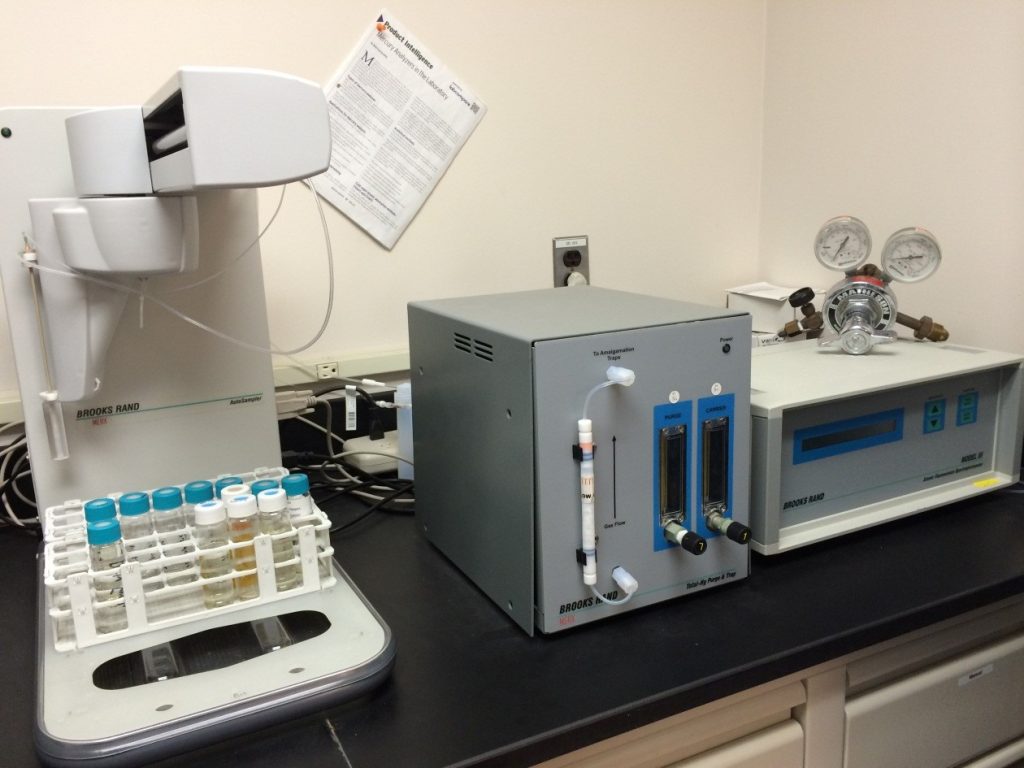
Inductively Coupled Plasma Mass Spectrometry ICP-MS (Agilent, 7700X)
Agilent 7700X Inductively Coupled Plasma Mass Spectrometry (ICP-MS) is a type of mass spectrometry which is capable of detecting metals and several non-metals at concentrations as low as one part per trillion. ICP-MS is widely used for the various elemental analyses of environmental samples including low level trace metals in drinking water (Method 200.8), wastewater and solid waste (SW-846 and Method 6020). Currently in MRRI laboratory, we analyze 19 metals with EPA Method 200.8.
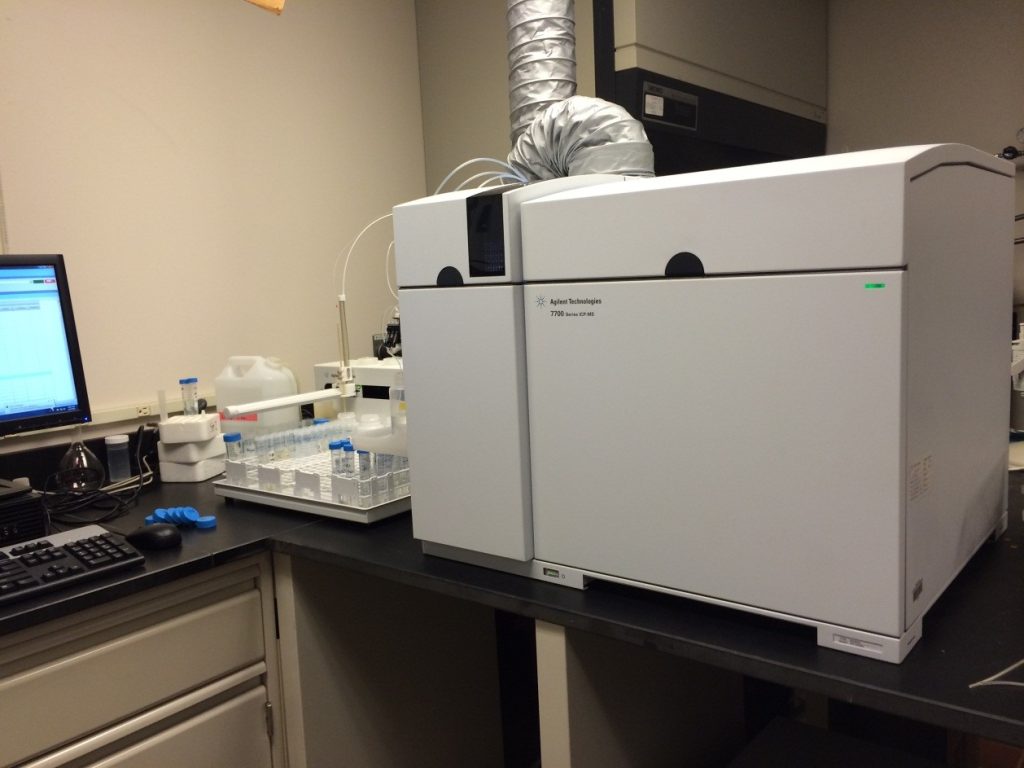
Atomic Absorption Spectrometer (Varian SpectrAA-220)
Analyze Metals- Atomic absorption spectroscopy (AAS) determines the presence of metals in the samples. Metals include Fe, Cu, Al, Pb, Ca, Zn, Cd and many more. Typical concentrations range in the low mg/L range.
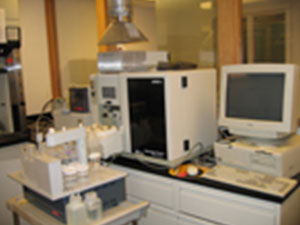
Thermal Desorption System (Series Unity II, Marks International)
The Ultra®thermal Desorption is highly versatile, sensitive and labor-saving sample preparation technique for the measurement of volatile and semi volatile organic compounds (VOC and SVOC) in air and materials. It is applicable to GC-compatible organics ranging in volatility from acetylene to n-40 and a few inorganic gases-SF6, CS2 and H2S.
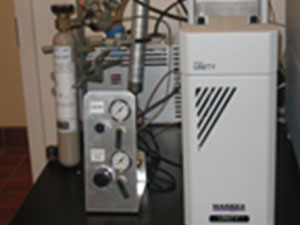
Accelerated Solvent Extractor (ASE) (Dionex 100)
Extractions that normally take hours can be done in minutes using Accelerated Solvent Extraction (ASE®). Compared to techniques like Soxhlet and sonication, ASE generates results in a fraction of the time. In addition to speed, ASE offers a lower cost per sample than other techniques by reducing solvent consumption by up to 90%.
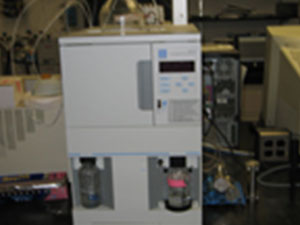
Gel Permeation Chromatography (GPC) (SP 2000, OI)
Gel Permeation Chromatography (GPC) is a highly effective and efficient post-extraction clean-up method for the removal of high molecular weight interferences such as lipids, proteins, humic acid and pigments from sample extracts prior to analysis.
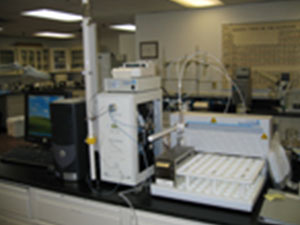
UV/Vis Spectroscopy (Beckman DU-530)
The UV/VIS spectrometer is useful instrument for the screening test and simple identification/quantification of inorganic and organic compounds.
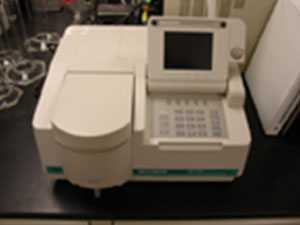
Microwave Digestion Systems (SCP Science, MiniWAVE)
The Microwave Digestion system is used to extract trace elements from the environmental sample matrix by using high pressure and temperature in the system to increase reaction rate and decrease digestion time for the trace metal analysis.
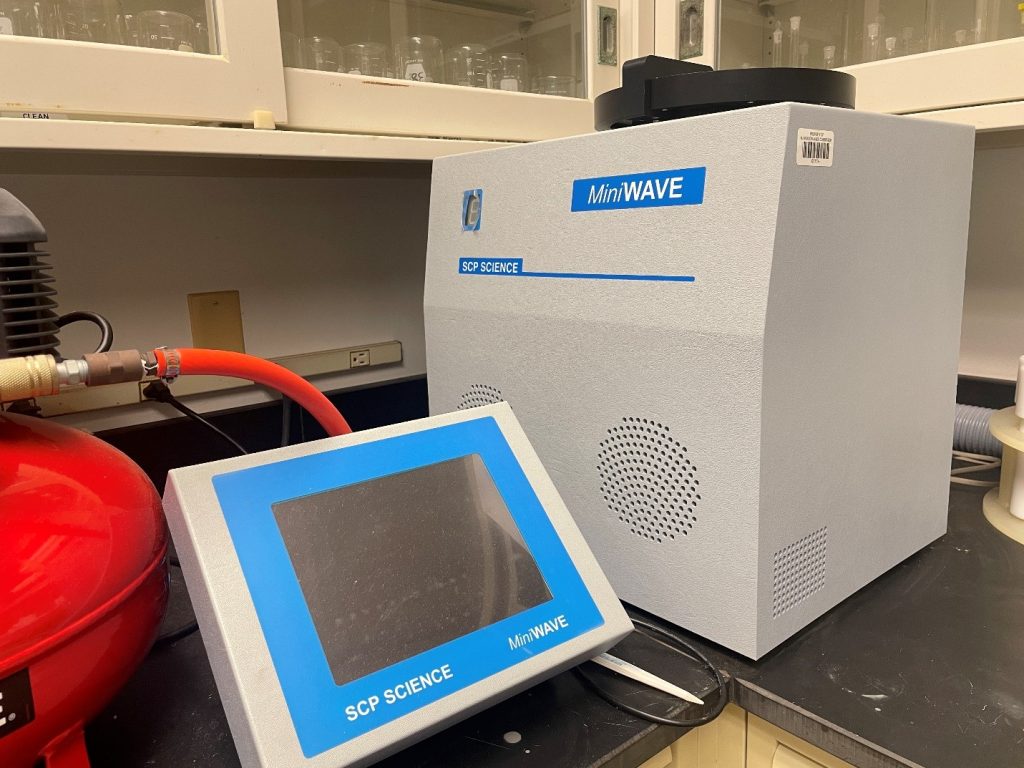
Microwave Digestion Systems (CEM, MARS)
Microwave Digestion system is used for the extraction of trace elements from environmental sample matrix by using high-pressure and temperature in the systems in order to increase reaction rates and decrease digestion times for the trace metal analysis
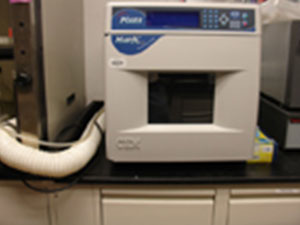
Milli-Q DIRECT 8 WATER PURIFICATION SYSTEM
The all-in-one Milli-Q Direct 8 Water Purification System delivers both pure (reverse osmosis (RO), Type 3) and ultrapure (Type 1, 18.2 MΩ·cm) water directly from tap water at a flow rate of 8 L/hr, which exceeds the requirements of the most demanding norms.
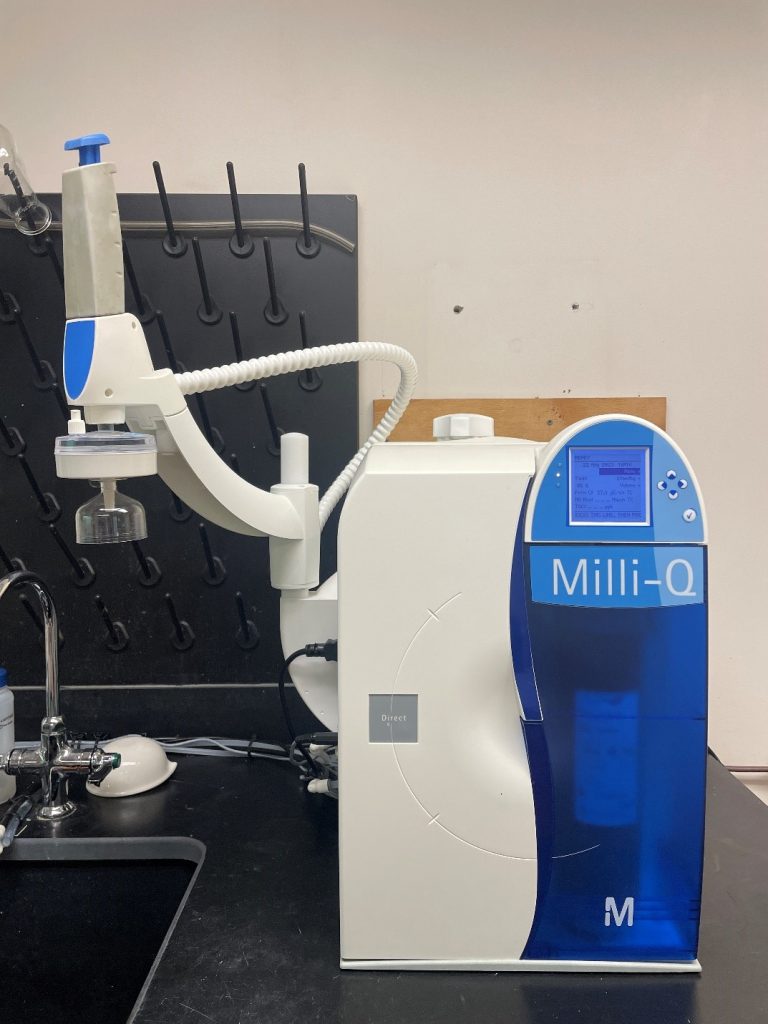
Ozone, CO, NOX, SO2 & CO2 Analyzers (Thermo Fisher 49i, 48i, 42i, 43i, 410i)
Using UV Photometric technology, the Model 49i measures the amount of ozone in the air from ppb levels up to 200ppm.The Model 49i is a dual cell photometer, the concept adopted by the NIST for the national ozone standard.
Model 48i-TLE measures the amount of carbon monoxide in the air. The Model 48i-TLE is based on the principle that carbon monoxide (CO) absorbs infrared radiation at a wavelength of 4.6 microns. Because infrared absorption is a nonlinear measurement technique, it is necessary for the instrument electronics to transform the basic analyzer signal into the linear output. The Model 48i-TLE uses an exact calibration curve to accurately linearize the instrument out put over any range up to a concentration of 1000ppm.
Using chemiluminescence technology, the Model 42i measures the amount of nitrogen oxides in the air from sub-ppb levels up to 100ppm.The Model 42i is a single Chamber, single photomultiplier tube design that cycles between the NO and NOX modes. The 42i has independent outputs for NO, NO2, and NOx and each can be calibrated separately. Dual range and Auto range are standards features as well.
Using pulsed fluorescence technology, the Model 43i measures the amount of sulfur dioxide in the air up to 10ppm. The pulsing of the U.V. source lamp serves to increase the optical intensity whereby a greater U.V. energy throughput and lower detectable SO2 concentration are realized. Reflective band pass filters, as compared to commonly used transmission filters, are less subject to photochemical degradation and more selective in wavelength isolation. This results in both increased detection specificity and long term stability.
Model 410i is designed to monitor and report on CO2 stack gas levels utilizing either of the accepted industry standard sampling methods, Straight Extractive Sampling or Dilution Sampling. The gas detection scheme uses optically fixed bandpass interference filters and quantum detection to analyze the gas stream, leading to a superior level of performance and reliability. Add to that, an expanded ambient temperature operating range and these instruments provide excellent performance over a wider range of concentrations.

PM2.5 sampler (Partisol-FRM 2000)
PM2.5 particles – fine particles in the (ambient) air 2.5 micrometers or less in size (known as PM2.5). These particles generally come from activities that burn fossil fuels, such as traffic, smelting, and metal processing, known to produce respiratory and cardiovascular illness.
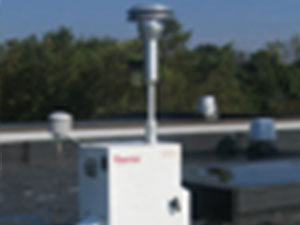
Hi Vol Sampler (TE-PNY1123)
The TE-PNY1123 High Volume PUF Air Sampler is for the collection of TSP (Total Suspended Particulate) and PUF with large sampling rate. The sampler is based on aerodynamic principles which result in the collection of particles of 100 microns (Stokes Equivalent Diameter) and less.
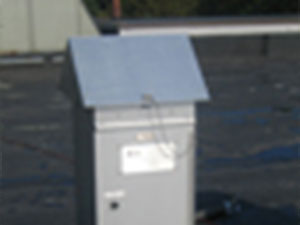
Micro Orifice Uniform Deposit Impactor (MOUDI) (MSP 100)
MOUDI is for air sampling and collecting size fractioned aerosol particle for gravimetric and/or chemical analysis. With 30L/min sampling rate, it provides 8 different size cut points from 0.18µm to 10µm.

Rotary Evaporator
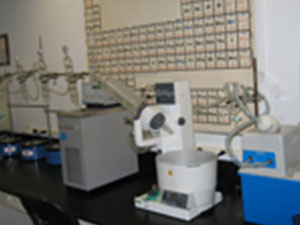
Soxhlet Extraction System
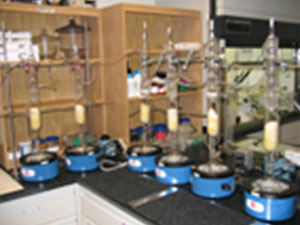
Temperature Controlled Shaker
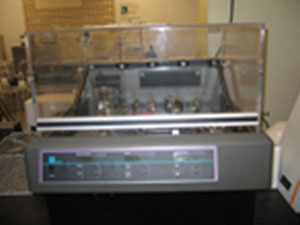
Muffle Furnace
